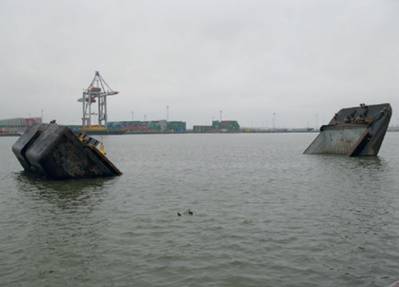BMT Comments on Recent Barge Casualties
Recently, BMT was consulted in a number of cases/casualties involving the breaking and subsequent salvage of inland navigation barges. The incidents all occurred during loading operations. Since old barges were involved, questions immediately arose about the cause of the incident. Did the barge give way due to poor construction, or was the collapse caused by faulty loading or something else? Some older barges may indeed suffer from degraded sections in their construction. At the same time, investigation has shown that this may not necessarily be the cause, but that an incorrect loading procedure was to blame.
Carlos Maenhout, Managing Director and Senior Surveyor at BMT Surveys, a subsidiary of BMT Group explains the issues involved when investigating incidents involving structural failure of inland barges. Is it a trend or just coincidence that a number of these incidents occurred last year?
The construction design of an inland navigation barge cannot be compared to that of a sea-going vessel. While sea-going vessels are designed to withstand heavy weather, rough seas, waves, etc., an inland navigation barge is designed to sail in sheltered waters. Moreover, historically, barges are designed to carry cargo in bulk or in bags which should be equally spread over the entire tank top of the cargo hold. When this principle of equal spreading is not respected, the barge tends to bend in the middle, a condition which is also known as “sagging.” This condition generates high compression stresses in the hatch coaming, and high tensile stresses in the bottom plating. Once these stresses exceed the buckling resistance of the hatch coaming construction, or the yield strength of the bottom steel plates, the vessel folds in the middle.
Furthermore, a proper athwartships distribution of the cargo load should be respected. Once cargo is loaded any other way, the bottom tends to bend in transverse direction, the effect of which is increased by the hydrostatic water pressure in the ships’ sides.
The accompanying photo shows an example of such faulty loading. The heavy steel plate stacks do not cover the entire length of the cargo hold; moreover, the cargo weight is concentrated near the barge’s center line rather than having been spread sideways. Ten minutes after leaving its berth, this barge suddenly collapsed and sank. After salvage of the wreck, the typical failure mechanism as described above could be clearly noted: the barge’s bottom was bent downwards in transverse direction, its sides were pushed inward and its hatch coaming was heavily buckled.
In these kinds of incidents, reconstruction of the loading procedures is important as these represent the last actions prior to the barge’s collapse. Reconstruction can be based on witness statements, possible available photographs, videos from security cams, diving inspections before salvage, etc.
Subsequently, strength calculations of the still water bending moments and the section modulus may be conducted by BMT to find out whether or not the barge collapsed as a consequence of its loading condition.











